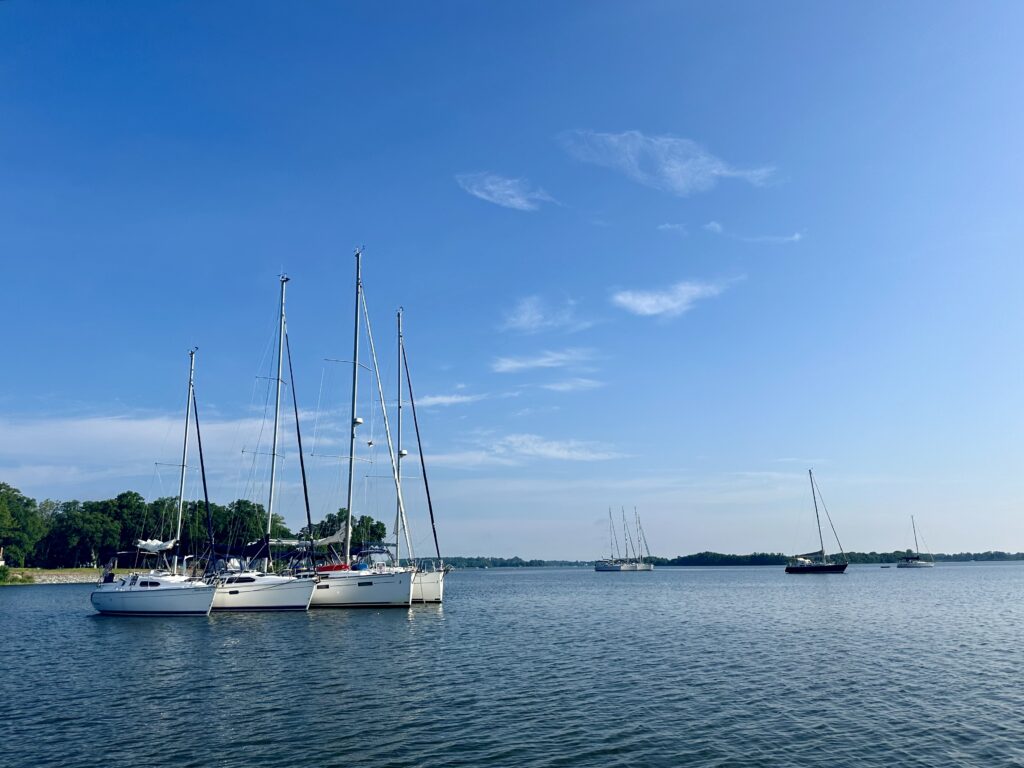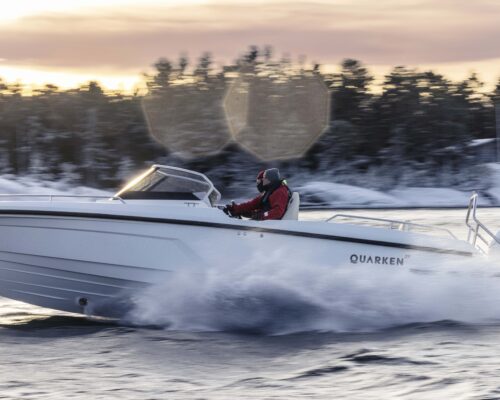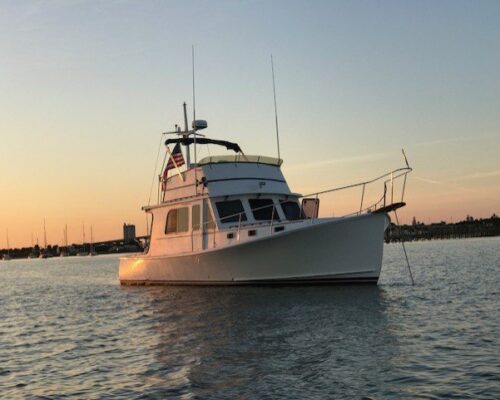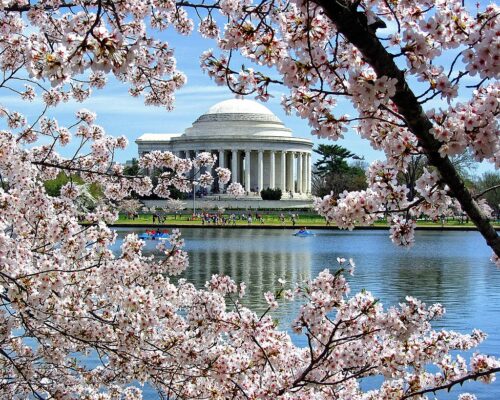There’s an almost ineffable joy involved in exploring the Chesapeake by sailboat. Moving at a slow crawl, an entirely new world begins to open around every bend. For our family, this is a quiet sense of adventure, and the Chesapeake unfurls a labyrinth of villages and cities, coves and bays to satisfy dreamers young and (unfortunately) middle-aged.
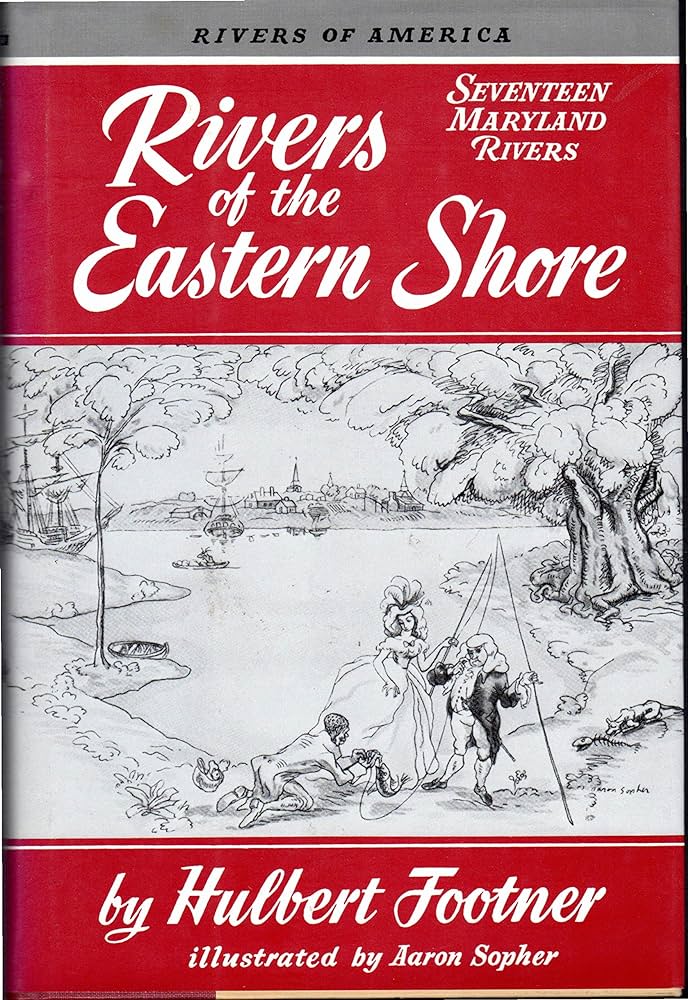
But sometimes we have to explore via land yacht, which is what we were doing several months ago while the boat was still on the hard. We took the kids across the bridge to the Christmas markets of St. Michaels, and digging around in an antique shop I found an old edition of Hulbert Footner’s Rivers of the Eastern Shore. Originally published in 1944 as part of the Rivers of America series, Footner examined the local history of the area with colorful language and a healthy dose of what we would today call “snark.” I picked up the vintage copy (published 1944 by Tidewater Publishers) and ordered my husband a copy of the second edition (recently published by Schiffer Publishing) for a Christmas present.
Footner chronicles the history of the Eastern Shore’s rivers from the perspective of the families who lived there. It’s not a cruising guide per se, and whether the dramatics are historically accurate or Footner was just a bit catty, some of the stories of America’s founding families come across a bit like the Real Housewives of Easton. In a good way.
One passage in Footner’s tome spoke of the Wye River and its connection to the Paca family. William Paca, whom Footner calls, “the Signer,” was a member of the First and Second Continental Congresses, the third governor of Maryland, and a signer of the Declaration of Independence in 1776 (not in that order). But back in 1765, he was busy building a grand estate on his plantation on the Wye River, calling it Wye Hall and placing favorite family members in its various outcroppings.
Footner notes that Wye Hall was “celebrated alike for its magnificence and its horrors.” William Paca died at Wye Hall in 1799, but multiple generations of Pacas continued to live on the Wye, burying family in a small cemetery “crowded with graves, but not many gravestones … due to a family superstition that he who puts up a stone for a departed member will be the next to go.” Cousins married; brothers murdered each other; a son attempted to drown a dog and instead ended up committing suicide. Footner shares the Paca history with a nod to the madness of privilege, an almost gossipy tone discussing Maryland’s Founding Family.
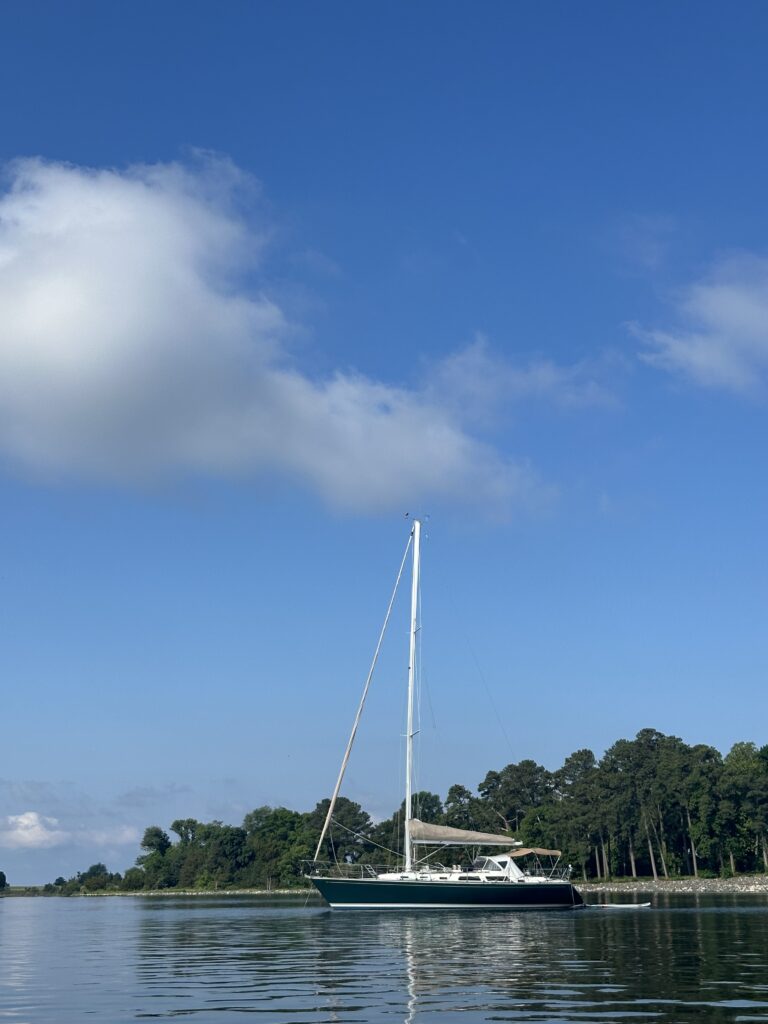
We had to check out the Wye.
From our home off the South River, we crossed the Bay and rounded Bloody Point, heading up the Eastern Bay like we were headed for ice cream in St. Mikes. But instead of dropping down into the Miles, we rounded Bennett Point and tucked into Shaw Bay, nestled at the apex of the Wye and Wye East Rivers. With low-lying peninsulas, we navigated to our anchorage by spotting masts among the trees.
Shaw Bay is a sleepy little cove. Guidebooks talk about its popularity on the weekends, but this Memorial Day we only caught up with a flotilla of Hunter sailboats. With names like Adagio and Meander, we knew we were in the right place for some rest and relaxation. The raptors provided the entertainment by using the bay as a hunting ground.
While it was the history of the Paca family that led us to Shaw Bay, our sailboat was anchored in a cove that another illustrious American made famous (for very different reasons). On the eastern shore of Shaw Bay, nestled on a peninsula that extends into the Wye between Shaw and Lloyd Creek, sits Wye House, home of the Lloyd Family. Wye House was the seat of the Wye Plantation, originally established in the 1650s, with the house built in the 1780s. And it was to Wye House that Frederick Douglass was brought as an enslaved six-year-old boy in 1824.
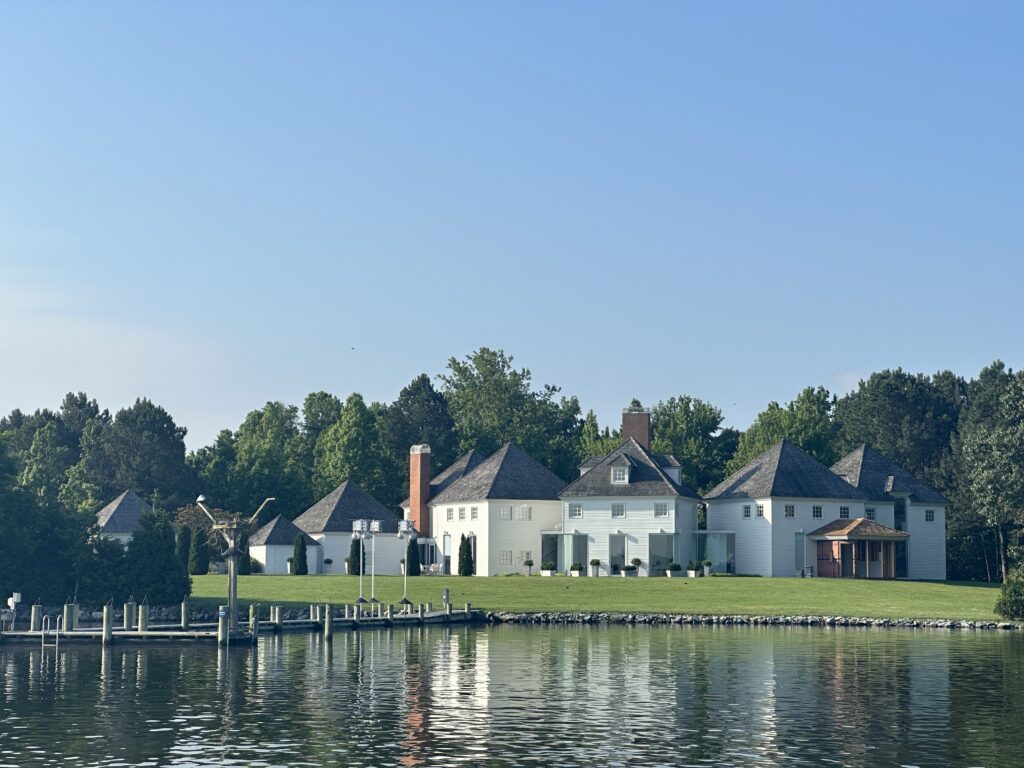
Douglass’s writings provide a very different picture of the Wye Plantation. With over 1,000 enslaved men, women, and children working the 42,000 acres, Wye Plantation was known for its brutal conditions—and its orangery. The orangery is the oldest surviving greenhouse in the country, dating back to the 18th century. The Lloyd family used it to grow exotic plants that could be used in medicine, giving it the name.
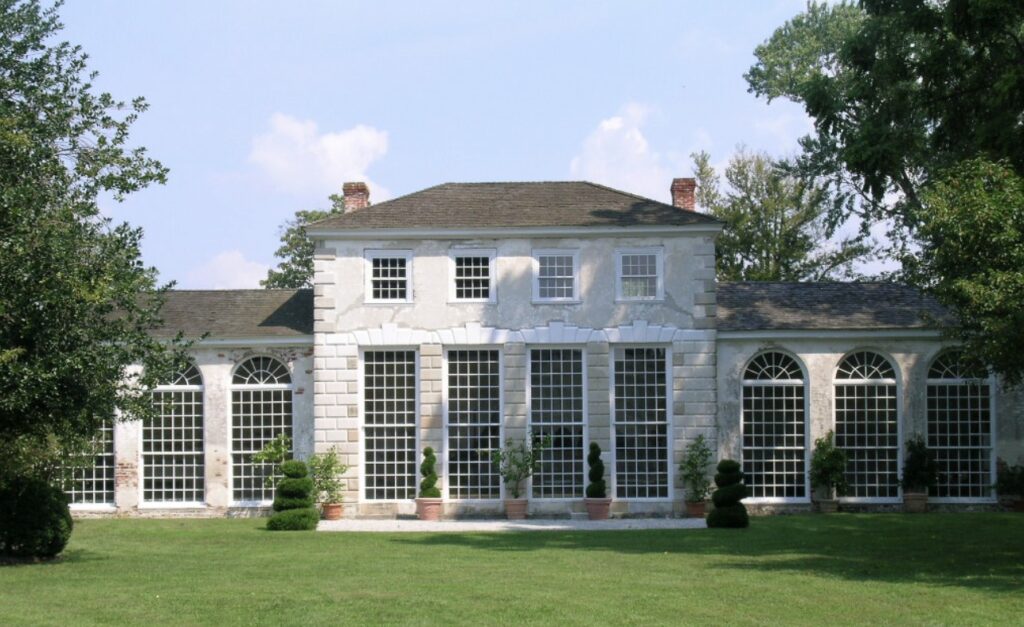
More than 10 generations of Lloyd family members have owned the land and the various buildings since 1659, and recently brought in archaeologists from the University of Maryland to examine the land and the structures. The archaeologists first worked with the members of the St. Stephen’s African Methodist Episcopal Church, the descendants of Wye Plantation’s enslaved population, to understand what questions could be answered with the dig. The church members wanted to know about the enslaved peoples’ spirituality, whether they were able to maintain any of their African culture, and how they endured slavery.
The dig proved to be informative. Talismans and sacred stones related to West African deity worship were found around the grounds, but also in the structural edifices, providing protection in the framework of the orangery and its furnace. A cosmogram, or a circle with an X inside it, was discovered underneath a tenant farmer’s house, providing insight into the religious practices of the plantation’s enslaved population.
You cannot see the orangery from Shaw Bay. The homes that line the shoreline are beautiful but not as old as the 18th century; we’ve come to recognize older homes by the number of chimneys they boast. Most of the Shaw Bay homes were built after indoor heating and cooling were standard practice.
However busy an operation Wye Plantation was, in 2024 the waterfront is much more peaceful. “Do you feel like you can just take a deep breath here?” my daughter asks. The answer is yes—the calm of the Bay speaks to the passing of time.
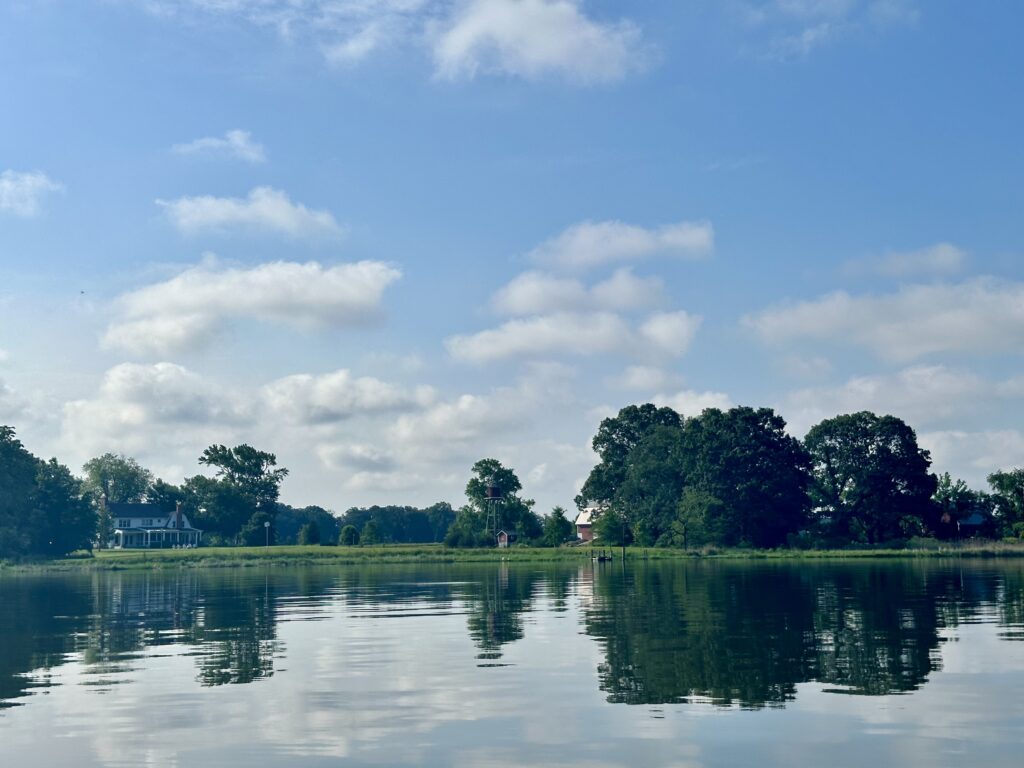
Cruising here, the distractions of everyday life fall away. With a splash, my son launches himself off the port rail and my daughter squeals from the paddleboard. They’re starting to get a little older, and they’re at the age where they might secretly wish to be an only child. But once the anchor gets dropped, they’re best friends.
The kids are exhausted after swimming for what seems like hours. They use the sun showers on deck and we eat a very simple dinner in the cockpit before I disappear in the vee berth with a mystery novel. I’m always the first asleep, with the kids playing cards and haranguing their father until stars fill the sky.
We have a rule on the boat: when exploring off the boat, the kids have to stay closer to our boat than any of our neighbors’ boats. But if our neighbors like to play music late into the night, the kids are allowed to wake early and take their shenanigans a bit further off.
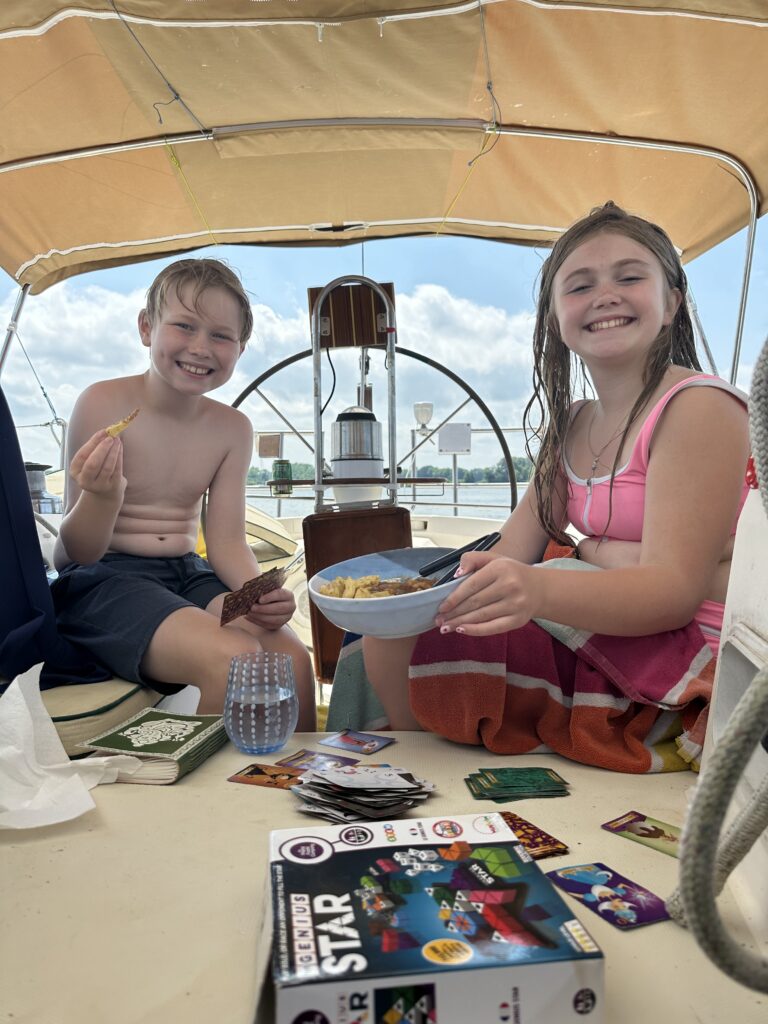
Luckily, we don’t have this problem in Shaw Bay. We all sleep like logs, a beautiful northerly flowing through the hatches all night long. I get up early and take the paddleboard out to explore: leaving Shaw Bay and getting into the Wye, you’re adjacent to the Wye River Natural Resources Management Area, roughly 2,500 acres of protected habitat for waterfowl and native wildlife. There’s a mature forest of tulip poplars, osage orange trees, and a holly tree that’s almost 300 years old. Local school kids come out and spend full weeks exploring the area, learning about the environment.
I have heard tales of the wild sheep of the Wye East, so I set out to explore. The Wye Heights Farm grazes hundreds of Black Welsh Mountain Sheep on more than 1,500 acres that were once the Wye House plantation. But the sheep are further up the Wye East, at least further than I’m willing to paddle. We’ll have to come back another time.
For a suburbanite, it’s hard to conceptualize the massive size of the Wye Plantations. And the fact that there were once thousands of people living in this sleepy cove seems impossible. The Wye was once home to some of the largest producers of tobacco, corn, and wheat on the Eastern Shore. But today, it’s so quiet and expansive that I can barely tell where the sky ends and the water begins.
As I paddle back, I know the kids are awake due to the smell of bacon frying. There’s more swimming and exploring (and my novel to finish). Then we pack up around lunchtime, watching the forecast and hoping for a breeze to carry us home. It’s looking like a power day, unfortunately.
“Do we have time for ice cream?” my son asks, of course. We look at the chart. We could detour to St. Michaels—it’s not impossible. My husband and I look at each other and shrug.
We have all the time in the world.

